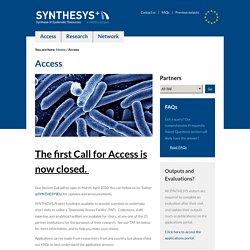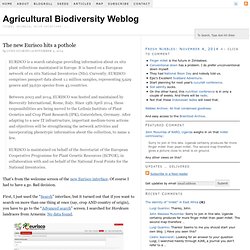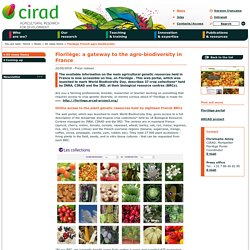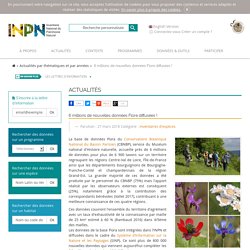

Living Collections Portal - Cambridge Botanic Garden. Herbarium WU, Institute of Botany, University Vienna. Darwin Core and Manual of the Alien Plants of Belgium. Synthesis: integrated European infrastructure. AT-TAF is comprised of the Naturhistorische Museum Wien.

The Naturhistorische Museum Wien opened in 1889, and is now home to scientists who undertake research across earth sciences, life sciences, and human sciences. The Museum is one of the largest non-university research centres within Austria. The collection comprises more than 30 million objects. The Museum’s earliest specimens and items were collected over 250 years ago, and was originally built to house the collection of the imperial Habsburg family. The collection on public display spans 39 showrooms comprising of 8,700 square metres The Museum is home to an extensive collection of world-famous artefacts and items, including the Venus of Willendorf, and the world’s largest and oldest public collection of meteorites on display.
Infrastructure The collections at NHMW are both historically and geographically significant. In addition to a workforce of 60 scientists, approximately 200 citizen scientists also support research at NHMW. Mapping the mosses and liverworts in south-east England. Botanicalcollections.be: The New Virtual Herbarium of Meise Botanic Garden (BR) Distributed Systems of Scientific Collections. Species - EUFORGEN European forest genetic resources programme. Eurisco: European Ex Situ Plant Collections. EURISCO is a search catalogue providing information about ex situ plant collections maintained in Europe.

It is based on a European network of ex situ National Inventories (NIs). Currently, EURISCO comprises passport data about 1.1 million samples, representing 5,929 genera and 39,630 species from 43 countries.Between 2003 and 2014, EURISCO was hosted and maintained by Bioversity International, Rome, Italy. Since 15th April 2014, these responsibilities are being moved to the Leibniz Institute of Plant Genetics and Crop Plant Research (IPK), Gatersleben, Germany. After adapting to a new IT infrastructure, important medium-term actions and objectives will be strengthening the network activities and incorporating phenotypic information about the collection, to name a few.EURISCO is maintained on behalf of the Secretariat of the European Cooperative Programme for Plant Genetic Resources (ECPGR), in collaboration with and on behalf of the National Focal Points for the National Inventories.
NW European Flora: Leda. Welcome - Data Portal. eElurikkus. French Natural History Collections. Florilège: a gateway to the agro-biodiversity in France. Are you a farming professional, breeder, researcher or teacher working on something that requires access to crop genetic diversity, or merely curious about it?

Florilège is made for you: Online access to the plant genetic resources held by eighteen French BRCs The web portal, which was launched to mark World Biodiversity Day, gives access to a full description of the temperate and tropical crop collections* held by 18 Biological Resource Centres managed by INRA, CIRAD and the IRD. The centres are in mainland France (apricot, cherry, melon, tomato, cereals, rapeseed, wheat, barley, oat, rye, maize, legumes, rice, etc), Corsica (citrus) and the French overseas regions (banana, sugarcane, mango, coffee, cocoa, pineapple, vanilla, yam, rubber, etc).
They total 27 000 plant accessions - living plants in the field, seeds, and in vitro tissue cultures - that can be requested from each BRC. One of the first banks in the cultivated world, in Montpellier in 2019. French Flora Database. La base de données Flora du Conservatoire Botanique National du Bassin Parisien (CBNBP), service du Muséum national d'Histoire naturelle, accueille près de 6 millions de données pour plus de 6 900 taxons sur un territoire regroupant les régions Centre-Val de Loire, l’Île-de-France ainsi que les départements bourguignons de Bourgogne-Franche-Comté et champardennais de la région Grand-Est.

La grande majorité de ces données a été produite par le personnel du CBNBP (75%) mais l'apport réalisé par les observateurs externes est conséquent (25%), notamment grâce à la contribution des correspondants bénévoles (Vallet 2017), contribuant à une meilleure connaissance de ces quatre régions. La reconnaissance de la base de données Flora en tant que base thématique de référence par le SINP dans les quatre régions que couvre l'agrément vient récompenser le travail effectué par le CBNBP depuis son agrément en 1998 en faveur de la connaissance de la flore sauvage. Crédit photos : S. Spring Flowers - Biodiversity Ireland. Atlas of Living Scotland. Key-project-source-now-online.